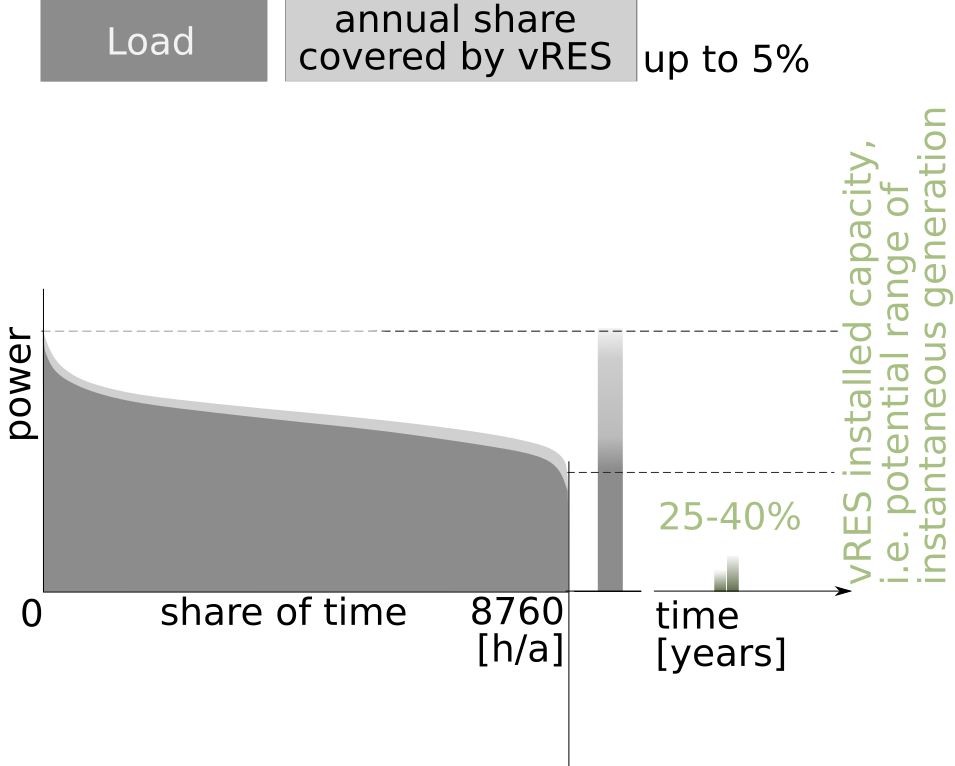
Indicators and Milestones
Installed vRES capacity (small blocks at the right of the graph) is increasing to values between 25% and 40% of
system minimum load (lower of the two dashed lines).
The
residual load
is slightly decreasing. Nevertheless, minimum residual load still is reliably more than 50% of system minimum load.
Milestone
System and network operators gain experience with the new element in their work processes.
They are able to specify future needs and prepare respective tools.
vRES share in annual generation increases to about 5%.
Implications
In this phase, still, there are no substantial changes at system level.
The
residual load
is always high enough for having substantial amounts of
dispatchable generation online.
The dispatchable generation takes care for load following and, at the same time, provides
ancillary services. Changes concern the following aspects:
-
Locally, vRES installations may have an impact on network loading and
may trigger network reinforcement or extension.
Depending on the growing RES-technologies their typical project sizes and respective connection points,
this concerns distribution or transmission networks.
If network capacity is insufficient, in the affected region temprorary curtailment of vRES is required.
If economic losses related to curtailment are not socialised,
this has an economic impact on the projects' performance.
Further development of vRES is possible only, if
network capacity is increased and project operators' risks are reduced to a manageable level.
-
Incidentally, steeper gradients of the residual load may occur. This has to be reflected in scheduling and operational dispatch.
Forecasts become important for efficient system operation.
Nevertheless, the regular concepts of system operation are still sufficient.
Of course, it is beneficial to prepare early for anticipated developments.
Renewables expansion can proceed surprisingly fast.
Adjustments of the electrical infrastructure usually take more time.
Power system planning needs to anticipate the further progressing transition.
Otherwise, there is a risk of delays and inefficiencies.
